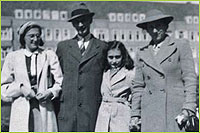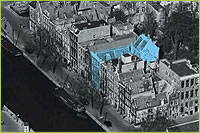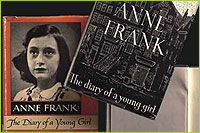| |
 |
|
Anne Frank House
The former hiding place, where Anne Frank wrote her diary, is now a well-known museum. The museum tells the history of the eight people in hiding and those who helped them during the war. Anne Frank's diary is among the original objects on display.
For more than two years Anne Frank and her family lived in the annex of the building at Prinsengracht 263 where Anne's father, Otto Frank, also had his business. The Van Pels
family and Fritz Pfeffer hid there with them. The doorway to the annex was concealed
behind a moveable bookcase constructed especially for this purpose. The office personnel knew of the hiding place and helped the eight people by supplying them with food and
news of the outside world. On August 4, 1944, the hiding place was betrayed. The people
in hiding were deported to various concentration camps. Only Otto Frank survived the war.
Nowadays, the rooms at the Anne Frank House, though empty, still breathe the
atmosphere of that period of time. Quotations from the diary, historical documents, photographs, film images, and original objects that belonged to those in hiding and
the helpers illustrate the events that took place here. Anne's original diary and other notebooks are on display in the museum. In the multimedia space, visitors can go on
a “virtual journey” through the Anne Frank House, accessing background information
about the people in hiding and World War Two. A contemporary exhibition is presented
in the exhibition hall.
A visit to the Anne Frank House lasts around one hour. There are no tours or guides.
A tour brochure with background information about the different rooms in the museum is available at the entrance. You can purchase special tickets in advance for an evening visit.
Links
www.annefrank.org
|





